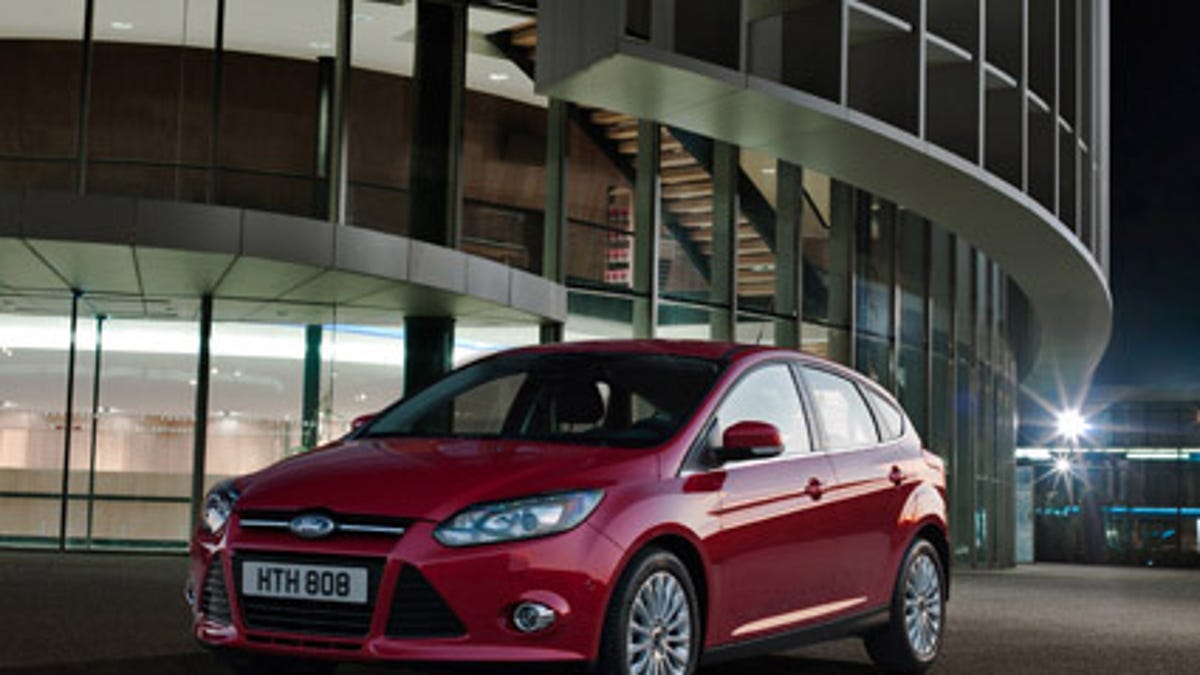Sounding the alarm: Which noises make the cut for Ford warning signals?
Ford engineers use math and music theory to develop warning tones for the 2012 Ford Focus.

We're all used to the pedestrian chirps at a traffic light, the click-click of a turn signal or even the beep-beep of a seat-belt alert, but engineers at Ford are taking further steps to understand what sounds folks will actually respond to without being annoyed.
Sound engineers at Ford use scientific theory, listening clinics and on-road simulations to find the sounds that prove most effective for driver alerts.
"Ford engineers spend a tremendous amount of time finding just the right sound for just the right situation to help customers react to potential dangers," said Paul Mascarenas, Ford vice president of engineering, Global Product Development. "We also listen to our customers so they listen to the car when needed--we don't want them to be annoyed and tune out important warnings."
Sounds that were tested, but didn't make the cut include a golf ball rattling into a cup, nature noises from birds and crickets, and night club sounds such as record scratching, Ford said in a press release.
Each sound goes through tests to determine if it will alert the driver, if the sound can be heard over the ambient background of the car and if the sound has universal appeal.
Audible alerts and lights now come standard in Ford Taurus, Explorer and Edge. A host of fresh sounds will accompany the new Focus, Ford said.
Four key uses for sight-and-sound signals include: BLIS (Blind Spot Information System) with cross-traffic alert. This feature identifies when a vehicle enters the blind spot and illuminates a light on the corresponding side-view mirror, providing a warning that a vehicle is approaching. An audible alert is also sounded.
Collision warning with brake support, which is designed to help drivers avoid rear-end collisions, uses long-range radar hidden in the front of the vehicle. The collision warning system detects moving vehicles ahead and alerts the driver with an alarm and a warning light.
Parents of teen drivers can use MyKey. It sets a limit of the vehicle's top speed and a limit on the radio volume. MyKey prompts buckling up, and it can be programmed to sound chimes at 45, 55, or 65 mph.
If all of these alerts aren't enough to keep you safe on the road, an additional seat-belt reminder for the driver and front-seat passenger takes over after the initial seat belt reminder stops chiming. If the driver and passenger don't buckle, the system chimes and flashes a warning lamp periodically for five minutes, or until the driver buckles up, whichever comes first.
To keep you from wanting to rip the chiming guts out of your car, engineers at Ford used music theory, mathematical analysis and psychoacoustics--the study of sound perception--to research properties such as pleasantness, loudness and sharpness.
"There are both creative and technical elements in fine-tuning our sounds to get them exactly right," said Alex Petniunas, technical expert for Sound Quality. "A key objective is identifying the kinds of warnings drivers will find both more effective and easier to understand so that safety features are used correctly and more frequently."

